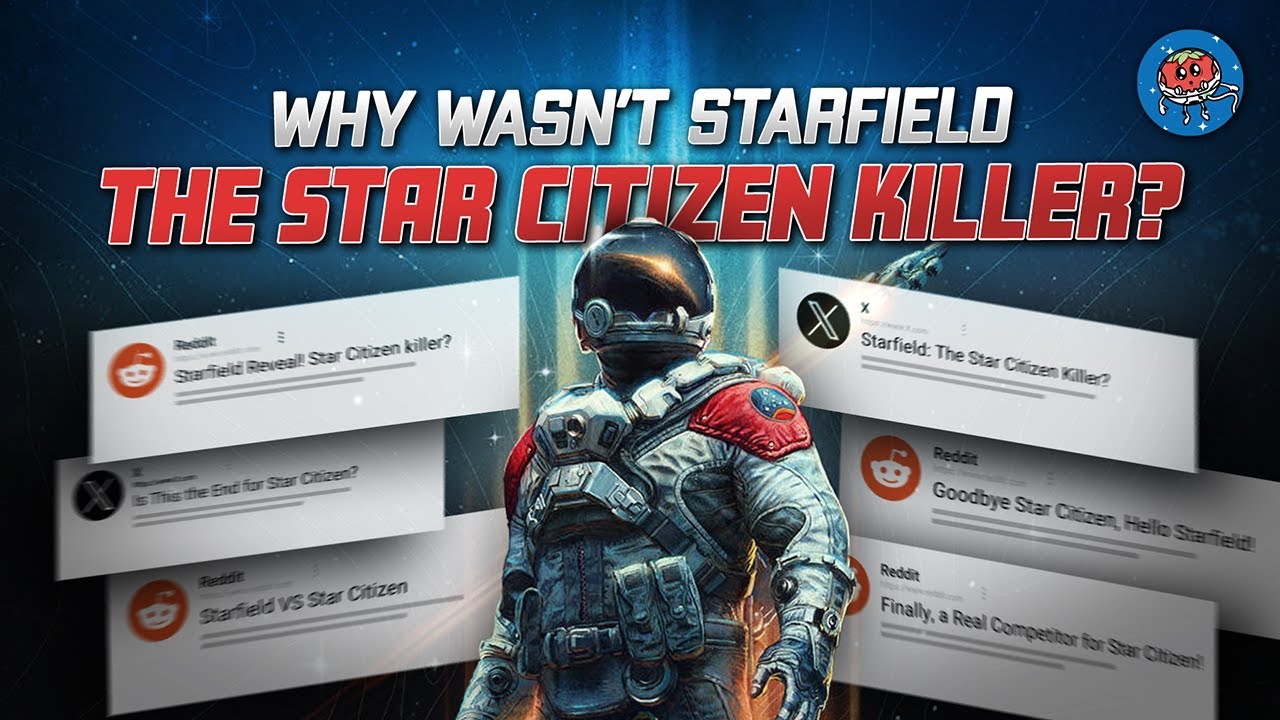The video explains that the release of Starfield’s latest DLC did not negatively impact Star Citizen because the two games cater to different player interests, with Starfield focusing on narrative-driven RPG elements and Star Citizen emphasizing an immersive MMO experience. Ultimately, the host argues that only Star Citizen’s own development challenges could hinder its success, as its unique gameplay features and continuous updates keep players engaged.
In the video, the host discusses why the release of Starfield’s latest DLC did not significantly impact Star Citizen’s player base or momentum. While both games share a space theme, they cater to different gaming experiences: Starfield is an action-adventure RPG focused on narrative and exploration, while Star Citizen is an MMO that emphasizes living and working in a persistent universe. This fundamental difference in genre is a key reason why neither game can truly “kill” the other, as they attract different player interests and preferences.
The host highlights that Starfield competes more closely with games like Baldur’s Gate 3 and Cyberpunk 2077 rather than Star Citizen. Players seeking a casual RPG experience may prefer Starfield’s story-driven gameplay, while those looking for a multiplayer experience with depth and variability are drawn to Star Citizen. Despite Starfield’s success in narrative design and NPC interaction, it lacks the same level of player agency and ship customization that Star Citizen offers, which keeps players engaged in its evolving gameplay mechanics.
The discussion then shifts to the ship mechanics of both games. In Starfield, players can design ships, but the experience is more limited and reminiscent of older titles like Mass Effect. In contrast, Star Citizen provides a wealth of ship choices that significantly affect gameplay, allowing players to engage in various roles such as mining, salvaging, or combat. This level of detail and variability in ship selection contributes to a more immersive experience in Star Citizen, despite its ongoing development challenges and incomplete features.
Another point raised is the ongoing evolution of Star Citizen, which regularly introduces new features and gameplay mechanics. While Starfield offers a more polished and complete experience, Star Citizen’s continuous updates keep players returning for fresh content. However, the host notes that the game’s economy and interwoven gameplay systems still require significant improvement to provide meaningful incentives for players beyond simply making money. This ongoing development is both a strength and a weakness, as players are often more interested in the game’s potential than the current gameplay experience.
In conclusion, the video emphasizes that the only thing that could truly hinder Star Citizen’s success is its own development stagnation. If the game fails to meet its ambitious goals, such as server meshing and a dynamic economy, it risks losing player interest. However, for now, Star Citizen continues to attract players with its unique offerings that are not easily replicated by other games. The host encourages viewers to engage further with the topic through live streams and podcasts, highlighting the ongoing discussion surrounding both games and their respective communities.
